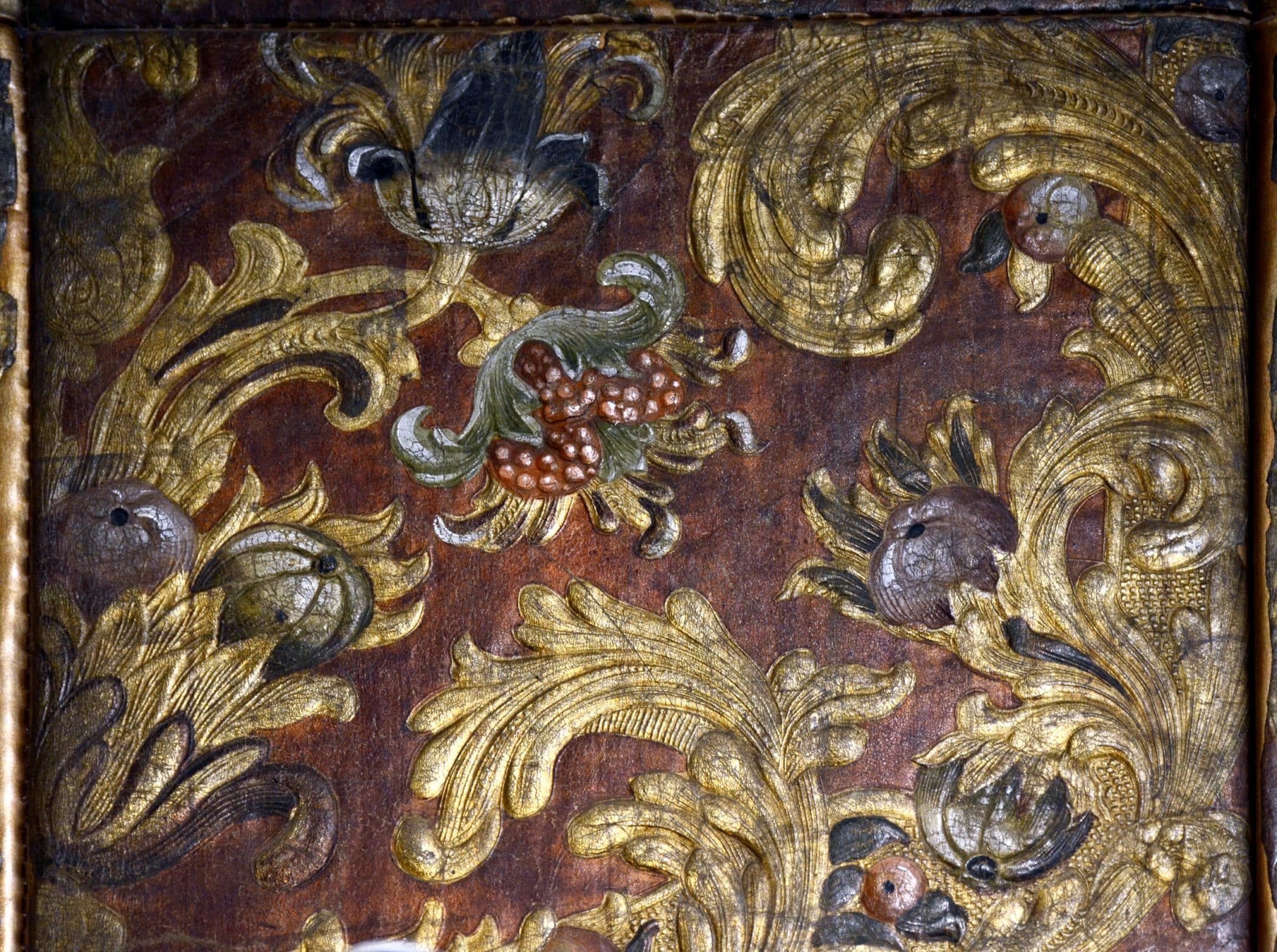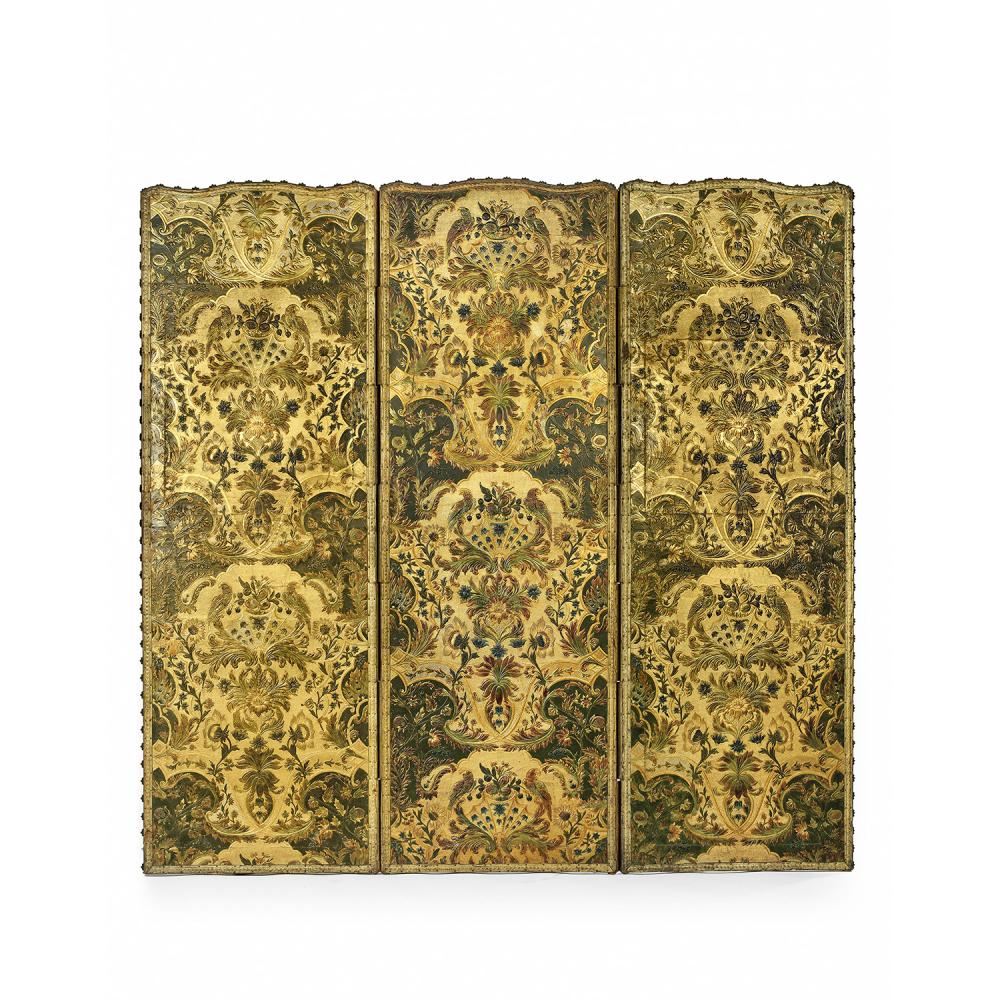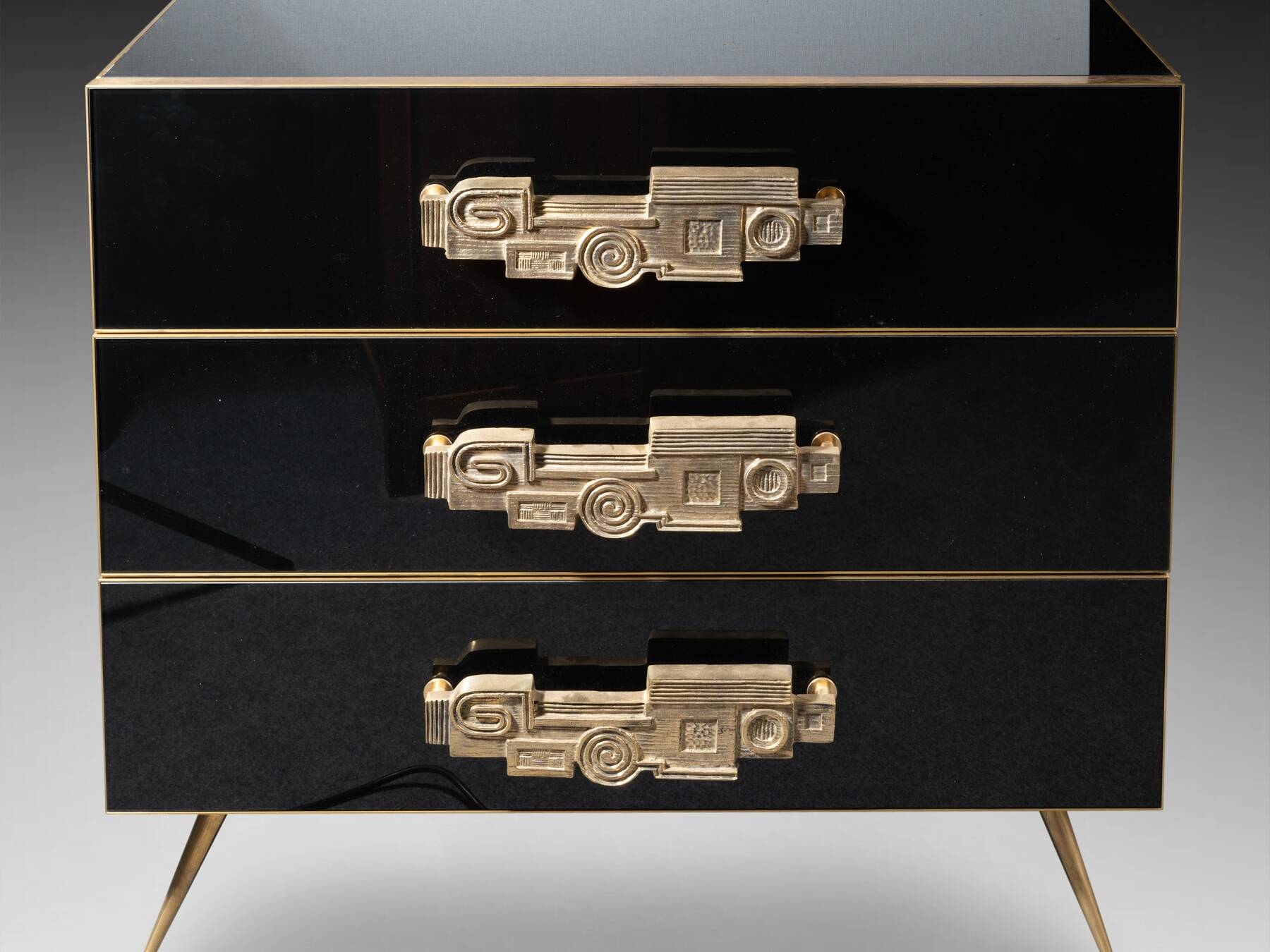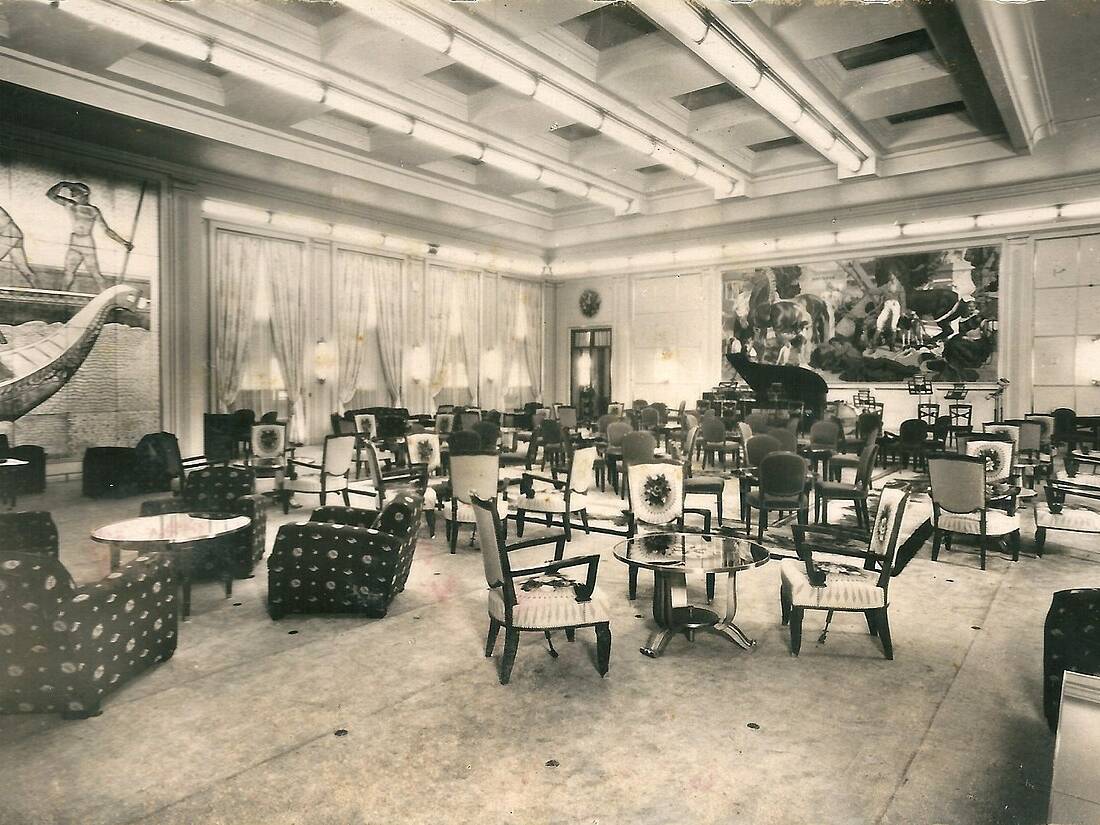The warm material of leather combined with the play of light of its reliefs thus produces spectacular pieces of decorative arts.

The Cordoba leather, swarthy gold or Spanish skins, all terms covering the same production of Spanish guadameciles, silvered leathers decorated with relief patterns sometimes painted or gilded. Renowned and sought after until the end of the 18th century, this ancient leather craft acquired its letters of nobility in the Libyan town of Ghadamès which, it is said, gave its name to the technique reused and perfected by the Andalusian Hispano-Moorish people. Although virtually no fragments survive before the 15th century, this art dates back to the 9th century.
Be careful to distinguish between two false friends: Cordoba leather (which will give us our word “shoemaking”) is not Cordoba gilded leather. While the first is a goatskin, the second is a basane (sheepskin) which serves as a support for the guadamecil. In the 16th century, Barcelona and Cordoba (which did not have the Spanish monopoly on leather production), only authorized ram leather for this art with which chairs, chests, screens, altar fronts and all other sorts of objects of devotion were covered, when they were not used as wall coverings. The expensive raw material predestined the use of these leathers to luxury, which required long and laborious preparation. After having thinned and stretched the skin for a long time, the craftsman cut it into tiles of regulated size (75 x 65 cm in Cordoba). Then each tile was coated with glue or egg white in order to adhere a silver leaf to it. The operation was repeated on the latter in order to protect the metal from oxidation. Then, the relief decoration was deeply engraved or stamped by hand before being directly painted on the silver leaf, the only effective way to maintain it on the leather without it crumbling. This silver support gave the paintings a special shine that is still visible today, even on the oldest leathers. By applying a yellow varnish to the metal leaf, long known to the Byzantine world, the silver was given the appearance of gold leaf which was never used on leather. From the reliefs of the stamping and the luminosity of the silver were born spectacular productions appreciated and exported, at least from the 14th century, in France and Italy but also in Flanders.

The movement of craftsmen favored the diffusion of techniques and by the 1630s, Flanders surpassed Spanish mastery. French calfskin, fine and resistant, was preferred to sheepskin and imported to Flanders where it was worked mechanically: embossed using wooden molds and counter-molds or embossed using heated and applied metal plates. in press. By varying the quality of decorations and leather, production in northern Europe drastically reduced costs. The decorations sometimes reached 2 or 3 cm in relief, a modeling impossible to obtain by hand and a characteristic signature distinguishing the guadameciles of Flanders from those of Spain. In the 18th century, leather hangings were produced and demanded everywhere, from Portugal to Poland, Germany and England. The patterns followed the fashions, particularly those for silks, playing on the effects of light and shadow, shine and colors. Then fabric hangings came for a time to supplant these heavy and expensive skins before wallpaper supplanted them both in the 19th century. Cordoba leather, still produced in France today, remains a luxury craft and its intimate use.

Marielle Brie de Lagerac
Art historian for the art market and cultural media.
Author of the blog Objets d’Art et d’Histoire
Autres ressources et documentations
28 June 2025
Plaster Sculptures, Plaster Casts
For a long time, plaster casts suffered from a poor reputation. Often regarded as crude replicas, and sometimes even dismissed as inexpensive imitations, they nonetheless had…
17 April 2025
The Middle-Ages Furniture
Rare and highly sought-after, Middle-Ages furniture is making a strong comeback. An overview of this market, where enlisting the guidance of a professional is strongly advisable.
18 March 2025
Murano Glass Furniture
Since the beginning of the 20th century, Murano glassmakers have been exploring new horizons. After classic lighting and decorative art, Murano glass is now used to adorn…
16 December 2024
A bronze triton after the sculptures of François Girardon (1628 – 1715) in Versailles
This fountain element is all the more admirable as it is sculpted after the masterpieces of the Pyramid Basin, on the parterre of the North Wing of the Versailles gardens.
18 November 2024
Tyco Bookcase, by Manfredo Massironi, for Nikol International
A pure creation of optical art research in the 1960s, the Tyco library shelf designed by Manfredo Massironi invites the viewer to bring the work of art to life on a daily basis.
3 August 2024
The Ocean Liner Style
In the 20th century, the immense ocean liners connecting the Old Continent and the New World were ambassadors of tastes and innovations on both sides of the Atlantic.






